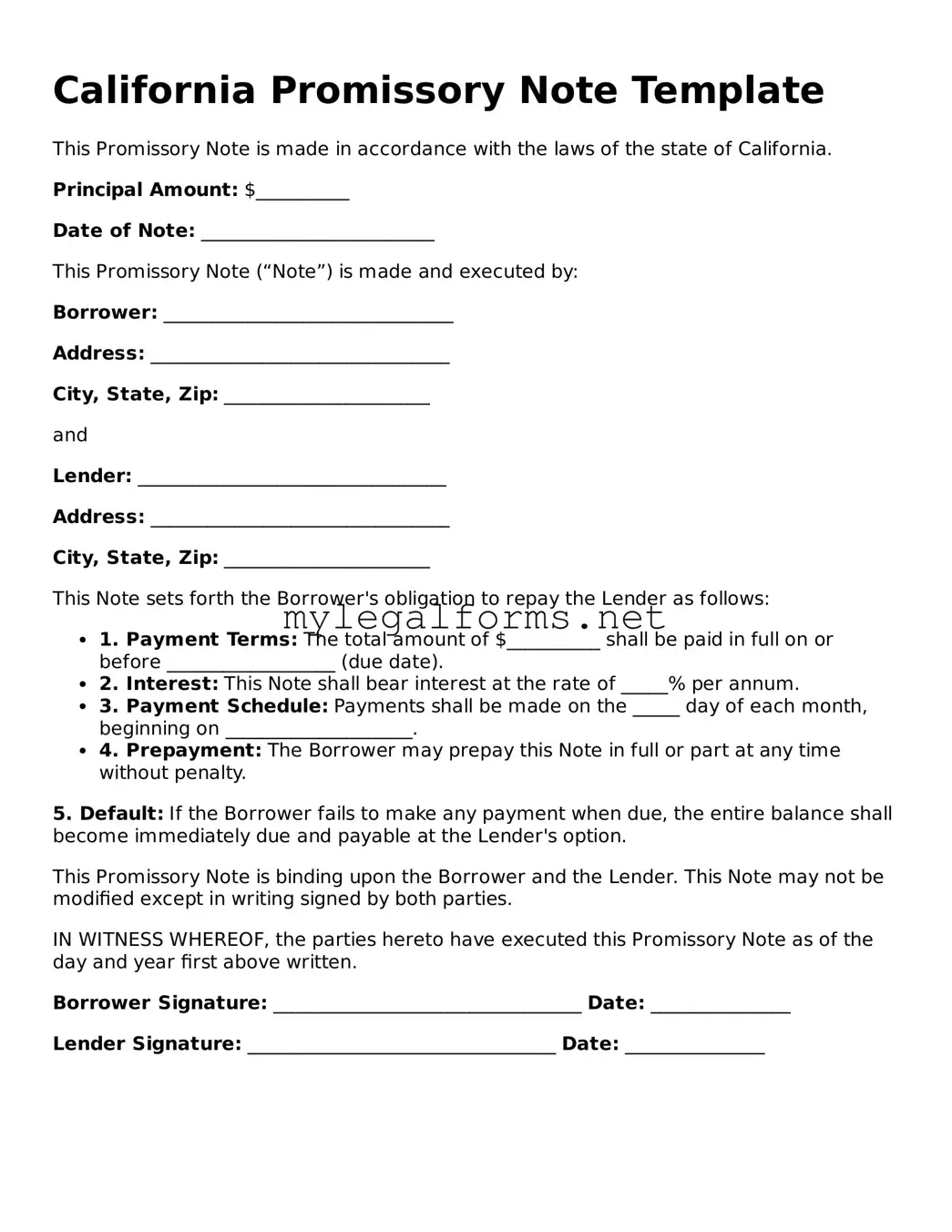California Promissory Note Template
This Promissory Note is made in accordance with the laws of the state of California.
Principal Amount: $__________
Date of Note: _________________________
This Promissory Note (“Note”) is made and executed by:
Borrower: _______________________________
Address: ________________________________
City, State, Zip: ______________________
and
Lender: _________________________________
Address: ________________________________
City, State, Zip: ______________________
This Note sets forth the Borrower's obligation to repay the Lender as follows:
- 1. Payment Terms: The total amount of $__________ shall be paid in full on or before __________________ (due date).
- 2. Interest: This Note shall bear interest at the rate of _____% per annum.
- 3. Payment Schedule: Payments shall be made on the _____ day of each month, beginning on ____________________.
- 4. Prepayment: The Borrower may prepay this Note in full or part at any time without penalty.
5. Default: If the Borrower fails to make any payment when due, the entire balance shall become immediately due and payable at the Lender's option.
This Promissory Note is binding upon the Borrower and the Lender. This Note may not be modified except in writing signed by both parties.
IN WITNESS WHEREOF, the parties hereto have executed this Promissory Note as of the day and year first above written.
Borrower Signature: _________________________________ Date: _______________
Lender Signature: _________________________________ Date: _______________
